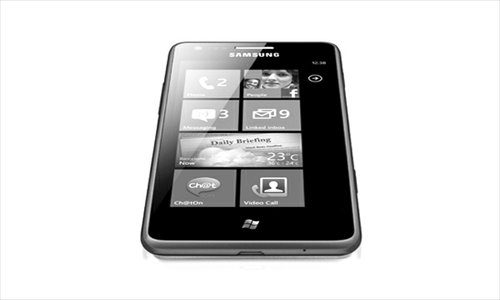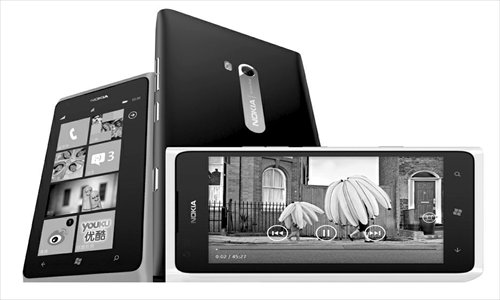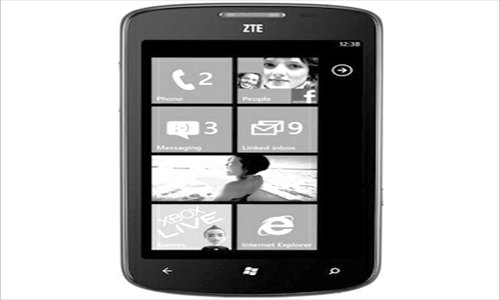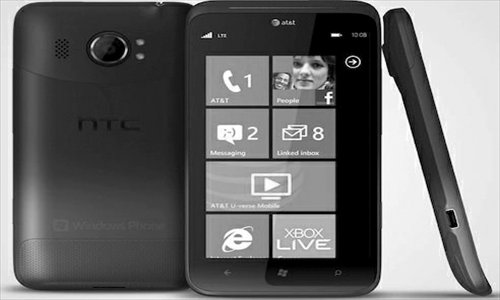New window may soon close
Showing off an iPhone is already hot for city-slickers, who are increasingly surrounded by Apple's lineup, without mentioning the crowded Android options from a range of cell phone makers. While smartphones are increasingly accessible to consumers, trying to stand out seems like a winning strategy.
A new smartphone operating system - Windows Phone - is banking on just this idea. If it has its way, it could soon be on level pegging with Apple's iOS as well as Google's Android platform. The Windows Phone from software giant Microsoft Corp has been regarded by some tech veterans as the biggest new hope to truly break the iPhone and Android stranglehold on the smartphone kingdom. A major backer is Finnish giant cell phone maker Nokia, which is placing its hopes on Windows Phones.
But things have proven to be less easy than originally expected, even though Microsoft has continued efforts to sell the idea to more cell phone vendors.
Sales of Windows Phone-based gadgets as a percentage of total smartphone sales in the US market are expected to inch up to just 4 percent in 2012 compared to 3 percent in the previous year, Boston-based market research firm Strategy Analytics said in a research report released on Wednesday. The US marketplace for smartphones is currently the second-largest worldwide, after the Chinese market.
Windows Phone remains far from posing a real challenge for the Android and iPhone lineup, said the report. It quoted the research agency's senior industry analyst Scott Bicheno as saying that three Windows Phone manufacturers including Nokia, HTC and Samsung are the three largest players in the field at the moment, and that this trifecta is likely to go unchallenged as the major driving forces in the Windows Phone camp.
This trend can be seen across the globe. Windows Phone sales worldwide are expected to account for 5.2 percent of the entire smartphone market, another US market research firm International Data Corporation (IDC) said in June. While predicting the portion of Windows Phone-based gadgets will rise to 19.2 percent by 2016, IDC said there is still a long way to go for Microsoft to dethrone Google in the arena, as Android phones would continue to claim the largest bulk of the smartphone market, reaching 53 percent by 2016.
Disappointments about Windows Phone's lackluster growth prospects have also grown of late as Nokia cut the prices of one of its flagship Windows Phones by half earlier this month in the US market, stirring fears of a lack of demand for Window Phones.
Analysts also forecast the Finnish handset maker is likely to sell 4 million Windows Phones during the second quarter, roughly doubling that seen in the previous quarter. However, this remains unremarkable compared to Apple's expected shipment of 30 million iPhones or Samsung's 50 million smartphones, Reuters reported on Wednesday.
This week's special TECH page gives you a glimpse of four latest Windows Phone-based gadgets, which may open a new window for you, although we don't guarantee you'll like what you see.

South Korean cell phone maker Samsung proves itself to be not only a strong force in the Android camp, but a heavyweight in the Windows Phone lineup. The Omnia S7530 was announced in May, showing the company's ambition to bite into a potential growth source for the smartphone sector.
Packing a 4.0-inch Super AMOLED capacitive display with a resolution of 480 by 800 pixels, the phone is also running on the Mango platform. The handset features a 1-gigabyte single-core processor, weighing in at 119g. With a thickness of 10.5mm, it also boasts a camera of 5 megapixels as well as a front-facing camera. The phone has a standard 1500 mAh Li-Ion battery.
It sells for around $300. In addition to the Omnia S7530 packing an on-board storage of 4 gigabytes, the company also launched the Omnia S7530E with 8-gigabyte internal storage.

The latest flagship Windows Phone Lumia 900 from Nokia might be one of the most depreciated as its price tag was recently cut by half in the US only three months after hitting the market.
AT&T, the largest wireless carrier in the US, has slashed pricing for the high-end Windows Phone in half for $50 with a two-year contract since last weekend. Market concerns over the Windows Phone's demand growth has since dampened, despite Nokia's statement that the price reduction is merely "industry standard practice," according to the New York Times.
The Lumia 900 that has been on sale in the Chinese market since mid-June also sees its price drop by roughly 800 yuan ($125) to below 4,000 yuan. The gadget appears to be powerful in terms of specs, however, analysts believe its sharp declining price tag may be due to Nokia's shifting to Windows Phones based on the next-gen Windows 8 platform. The new gadget is powered by Windows Phone 7.5, also known as Mango, and runs on a 1.4-gigahertz single-core CPU. Featuring a 4.3-inch AMOLED capacitive touchscreen with a resolution of 480 by 800 pixels, the gadget is a little clumsy, weighing in at 160g with a thickness of 11.5 mm. It packs an eight-megapixel camera with Carl Zeiss otpics, autofocus and dual-LED flash as well as a secondary camera of 1.3 megapixels for video chatting. The phone also sports an 1830 mAh Li-Ion battery, supporting standby of up to 300 hours in theory.

ZTE also announced in June its first Windows Phone in the Chinese market, in cooperation with China Unicom, the country's second-largest telecom carrier after China Mobile. The V965W from ZTE is actually an advanced version of the Tania from the Chinese handset maker that hit the European market months ago.
The V965W also runs on the Windows Phone 7.5 system, powered by MSM8255 1.4-gigahertz processor. The phone with a 4.3-inch TFT display has a thickness of 10.7mm. It also features a 5-megapixel camera and a 1400 mAh Li-Ion battery. The phone sells for 1,699 yuan in the mainland market. This compares to Tania's recent price slash from 250 euros to 100 euros across the European market.

The flagship Windows Phone Titan II introduced by Taiwan handset maker HTC earlier this year should be one of the most powerful among its buddies in terms of specs. Sporting a 4.7-inch S-LCD capacitive touchscreen that lives up to its name, the phone also runs on the Mango system, with a weight of 147g and a thickness of 13mm. Powered by a 1.5-gigahertz single-core Scorpion CPU, the phone packs a 16-megapixel camera with autofocus and dual-LED flash as well as a secondary 1.3 megapixels one for video conferencing.
It comes with internal storage of 16 gigabytes and with a 1730 mAh Li-Ion battery that boasts standby of up to 290 hours. The gadget currently sells for roughly $500.